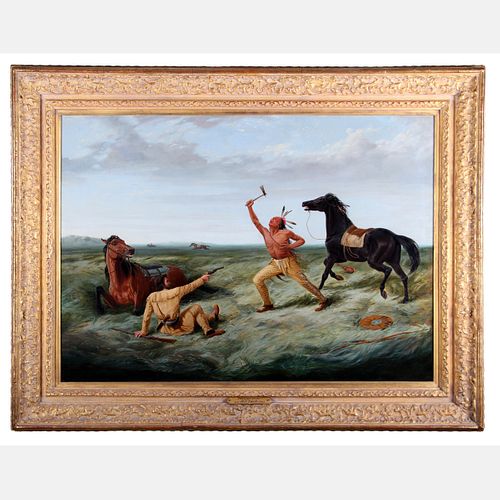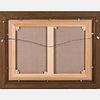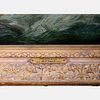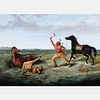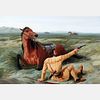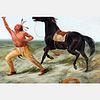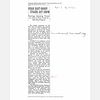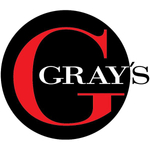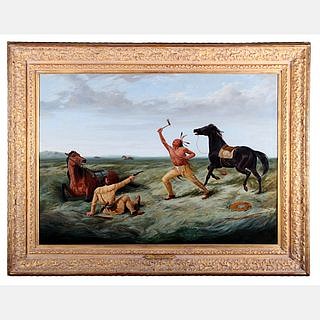Arthur Fitzwilliam Tait (British-American 1819-1905)
Lot 8
About Seller
Gray's Auctioneers
10717 Detroit Avenue
Cleveland, OH 44102
United States
Gray’s is a modern, fine art and antiques auction house combining the convenience of 21st century online technology with the excitement of a traditional live auction. Gray’s Auctioneers are Northern Ohio’s leading auctioneers & valuers of fine art, jewelry, decorations, antiques & rugs. With over th...Read more
Estimate:
$80,000 - $120,000
Absentee vs Live bid
Two ways to bid:
- Leave a max absentee bid and the platform will bid on your behalf up to your maximum bid during the live auction.
- Bid live during the auction and your bids will be submitted real-time to the auctioneer.
Bid Increments
| Price | Bid Increment |
|---|---|
| $0 | $10 |
| $200 | $25 |
| $500 | $50 |
| $1,000 | $100 |
| $2,000 | $200 |
| $5,000 | $500 |
| $10,000 | $1,000 |
| $20,000 | $2,000 |
| $50,000 | $5,000 |
| $100,000 | $10,000 |
| $200,000 | $50,000 |
| $1,000,000 | $100,000 |
About Auction
By Gray's Auctioneers
Apr 13, 2022
Set Reminder
2022-04-13 10:00:00
2022-04-13 10:00:00
America/New_York
Bidsquare
Bidsquare : Fine Art, Furniture and Decorations
https://www.bidsquare.com/auctions/grays/fine-art-furniture-and-decorations-9123
Fine Art, Furniture and Decorations from estates across NE Ohio, including the inventory of a retired antiques dealer, an extraordinary collection of 18th & 19th century toys and a Lalique glass collection from a Cleveland collector. Gray's Auctioneers info@graysauctioneers.com
Fine Art, Furniture and Decorations from estates across NE Ohio, including the inventory of a retired antiques dealer, an extraordinary collection of 18th & 19th century toys and a Lalique glass collection from a Cleveland collector. Gray's Auctioneers info@graysauctioneers.com
- Lot Description
Arthur Fitzwilliam Tait (British-American 1819-1905)
The Last Shot,
Oil on canvas,
Unsigned.
H: 26 W: 36 in.
Exhibition
The Last Shot was exhibited at the Near East Foundation Gallery in New York City and was mentioned in an article published in the New York Times on April 16, 1952. It is there referred to as by Tait, and as the original painting from which the popular Currier and Ives lithograph, drawn by Louis Maurer, was taken.
ProvenanceCollection of John C. Myers (1878 - 1952) thence to the collection of Ashland College.
Other Notes
The Last Shot is one of only twenty-two paintings Arthur Fitzwilliam Tait painted in his western series. This series was the first he executed upon his arrival in the United States. The series was completed in a one decade period from 1852 to the early 1860's.
The western series was very popular with the American public. The paintings in the series provided a loose narrative of the western experience, with titles such as Trappers Following the Trail, At Fault; The Check, Keep Your Distance; The Pursuit, The Last War Whoop and ultimately this painting. These images provided the public the adventure they craved. Through beautiful rendering both of animals and action figures, Tait was able to convey the movement, danger and tension involved in western exploration.
Tait himself never ventured West which makes his western oeuvre all the more interesting. The Last Shot captures the scene in gory detail. The firing of the trapper's last shot to save himself from being tomahawked, draws upon Tait's understanding of such an occurrence. The artist's depiction of the horses, their musculature as well as fearful expressions is in keeping with Tait's exceptional ability to render animals. The details depicted such as the shield, the tomahawk and the attire of both trapper and Indian were likely drawn from observations in the atelier of William Ranney. All of these details add to and enhance the narrative of this remarkable work.
Tait's ability to render the vastness of the prairie through the use of figures disappearing in the distance is repeated in several of the works in the series. In this painting, distance is conveyed by the riderless horse disappearing into the distance, the dead rider seen lying in the deep grass between the legs of the horse on the right. Lastly, the rendering of the vast panoply of the sky adds to the seemingly endless scope of the painting.
The Last Shot was chosen by Currier and Ives and delineated by Louis Maurer. Maurer delineated other Tait works for the printmakers specifically A Check, Keep Your Distance and Trappers on The Prairie, Peace or War.
Literature
The Last Shot has been observed to be remarkably like Tait by William H. Goetzmann and William N. Goetzmann in the book The West of the Imagination (2nd ed.). Comparison of the print to the painting shows exceptional similarity. Although the lot in question is not mentioned in the incomplete catalogue raisonné pamphlet held by the Adirondack Museum, its similarities to known and acknowledged works by Tait as well as the observations stated above place it in his western series.Conservation of painting done by Fodera Fine Art Conservation in 1990. The painting was faced with BEVA 371 and Japanese tissue. It was removed from the stretcher and the glue lining was reversed. The glue residue was cleaned from the back of the original canvas. The painting was treated on the vacuum hot table in order to remove the facing and to facilitate consolidation of the paint film. It was vapor treated on the vacuum hot table in order to reduce cupping. The area of canvas loss was replaced. The painting was cleaned and lined with BEVA 371, on sailcloth and Belgian lined, with a D-8 mylar interleaf. It was then re-stretched on a new, custom built stretcher. Losses were filled and in-painted. The painting was varnished. The final varnish is LK-80. The edges were taped and a protective foamcore backing was affixed. The painting was properly fitted in its frame.Condition
Under blacklight multiple areas of inpainting are visible as follows: Upper left corner and center area of sky; Sky to the left of the tomahawk; Lower left and right corners; Entire right margin; Craquelure repair through muzzle of black horse; through brown horse's saddle and in the Trapper's hair. Photos available on request. - Shipping Info
-
Gray's partners with The UPS Store for shipping. Please get shipping quotes before bidding. Their email address is store1016@theupsstore.com or by phone on 330-725-7033 (press 9 to be connected directly to the store). Please contact Gray's for local craters or for blanket wrap shipping services.
-
- Buyer's Premium



 EUR
EUR CAD
CAD AUD
AUD GBP
GBP MXN
MXN HKD
HKD CNY
CNY MYR
MYR SEK
SEK SGD
SGD CHF
CHF THB
THB